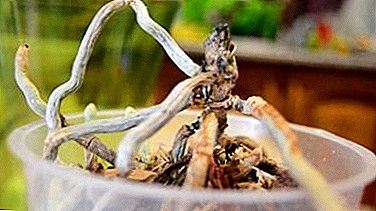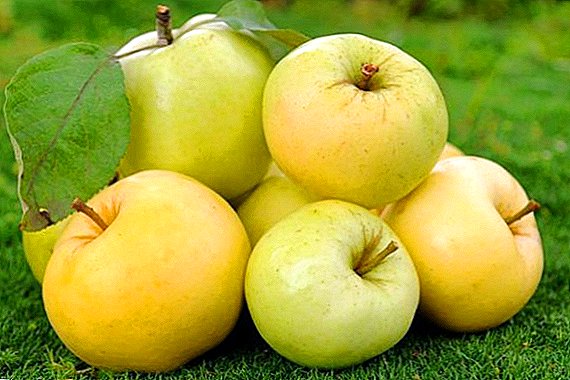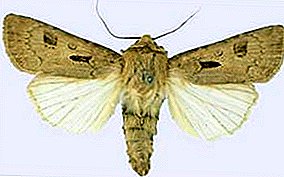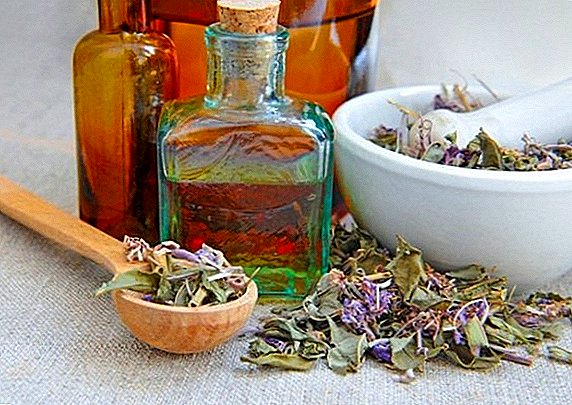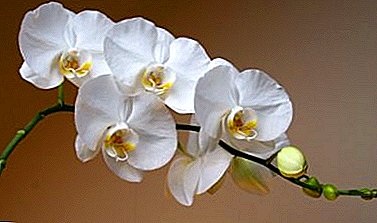
In the wild, orchids live very long. Some specimens have a hundred years. The current hybrids that were bred for growing in indoor conditions are not able to survive for such a long time.
The life expectancy of phalaenopsis is directly affected by the conditions that the host has created for its growth. The closer they are to the natural environment in which the wild orchid lives, the longer the home flower will live.
Flowering time and life - what's the difference?
The flowering time is the period during which phalaenopsis releases an arrow, fills the buds, forms flowers and drops them. The time of life is considered the period from planting until the death of the orchid.
How many blooms?
Phalaenopsis flowering time depends on the state of the flower and the conditions in which it is contained. The flowering period is usually quite long: from two months to six months.
How many years living at home?
Phalaenopsis is considered a long-liver among domesticated orchids. With proper care and care, he can live from seven to ten years.
Influencing factors
The main factors that affect the life span of an orchid are:
Growing conditions
For, for phalaenopsis to live as long as possible you need to properly organize the environment in which he will grow.
 First of all it concerns lighting, as the roots of the plant need sunlight.
First of all it concerns lighting, as the roots of the plant need sunlight.Direct sunlight is detrimental to orchids. She can burn leaves.
- Lighting should be diffused. During the hot summer, you can use a sunscreen to protect the flower.
- An important condition for the long life of the plant is temperature. Orchid is very sensitive to cold. Therefore, it is necessary to create comfortable conditions for its growth: from 20 to 25 degrees of heat.
- Watering plants need to be done through the pan, so as not to fill the aerial roots. Watering should be an orchid, depending on the time of year and when the soil dries.
If water gets on the orchid leaves, they should be wiped with a dry cloth.
- The humidity of the room where Phalaenopsis lives should be 40 to 45 percent. If it is not possible to achieve this indicator, it is recommended to use vessels with water in the room where the flower is located.
Transfer
Orchid very painful tolerates transplanting procedure. But it is necessary to implement it once in 2 - 3 years. This contributes to the renewal of the substrate and also protects the roots from rotting.
Top dressing
In order to provide the orchid a full existence, it is simply necessary to feed it. Currently, there are a huge number of different fertilizers, which are beneficial to the health of orchids.
Attention. Abuse dressing is not worth it. This may delay the blooming of the orchid.
Pests and diseases
Phalaenopsis is prone to many diseases. and is often a victim of parasites. Therefore, it is necessary to carefully examine the plant for the presence of pests:
- shield;
- spider mite;
- the rot.
Timely fight against diseases and parasites will significantly prolong the life of the plant.
Age determination
 Phalaenopsis age is difficult to establish accurately. It is impossible to do this, considering the number of leaves.
Phalaenopsis age is difficult to establish accurately. It is impossible to do this, considering the number of leaves.
It is known that a plant that has reached five years old gives children. Another way of setting age is counting leaves and bulbs. But it is relative.
The owner must be sure that the plant is completely healthy and has never been transplanted.
Is it possible to update an old flower and how to do it?
Phalaenopsis lifetime can be extended. In addition to proper care, another method is used to help support the plant. This is rejuvenation. To rejuvenate the orchid, of course, you need. But this must be done correctly. Otherwise there is a risk of losing the plant.
How to rejuvenate the old plant at home?
Rejuvenation of an adult orchid at home is not a very complicated procedure. Even an inexperienced florist can handle it. To rejuvenate a flower, it is necessary to perform the following manipulations:
- Prepare the tools. A garden knife or a scalpel with a sharp blade is best for pruning.
Important. The instrument must be sterile. Recommend to treat it with an alcohol solution.
- Trim the plant. Taking a tool in hand, you need to cut off the top with aerial roots. It is better to cut the part with five to six roots. So the orchid will undergo less stress. The remaining part will eventually give the children and the life of the orchid to last.
- Process the cut point. In order for a new orchid not to undergo various diseases and rotting, the cut must be treated with garden pitch or wax.
- The next step is to place the newly obtained plant in a transparent pot, filled with a suitable substrate.
Care
Both young and adult plants need constant attention and care. Young orchid requires more watering. The rest of the rules of cultivation are similar.
During the flowering period, the orchid absorbs more nutrients, so it needs to be watered and fertilized more often. A flowering plant requires more light and heat. In the dormant period, the orchid builds up a green mass. About watering at this time also do not need to forget. It is important to provide the necessary humidity in the room.
Phalaenopsis orchid is a perennial plant. It is very popular among florists. And this is well deserved. The plant is very unpretentious, incredibly beautiful and original. With proper care, an orchid will delight its owners for many years.


 First of all it concerns lighting, as the roots of the plant need sunlight.
First of all it concerns lighting, as the roots of the plant need sunlight.